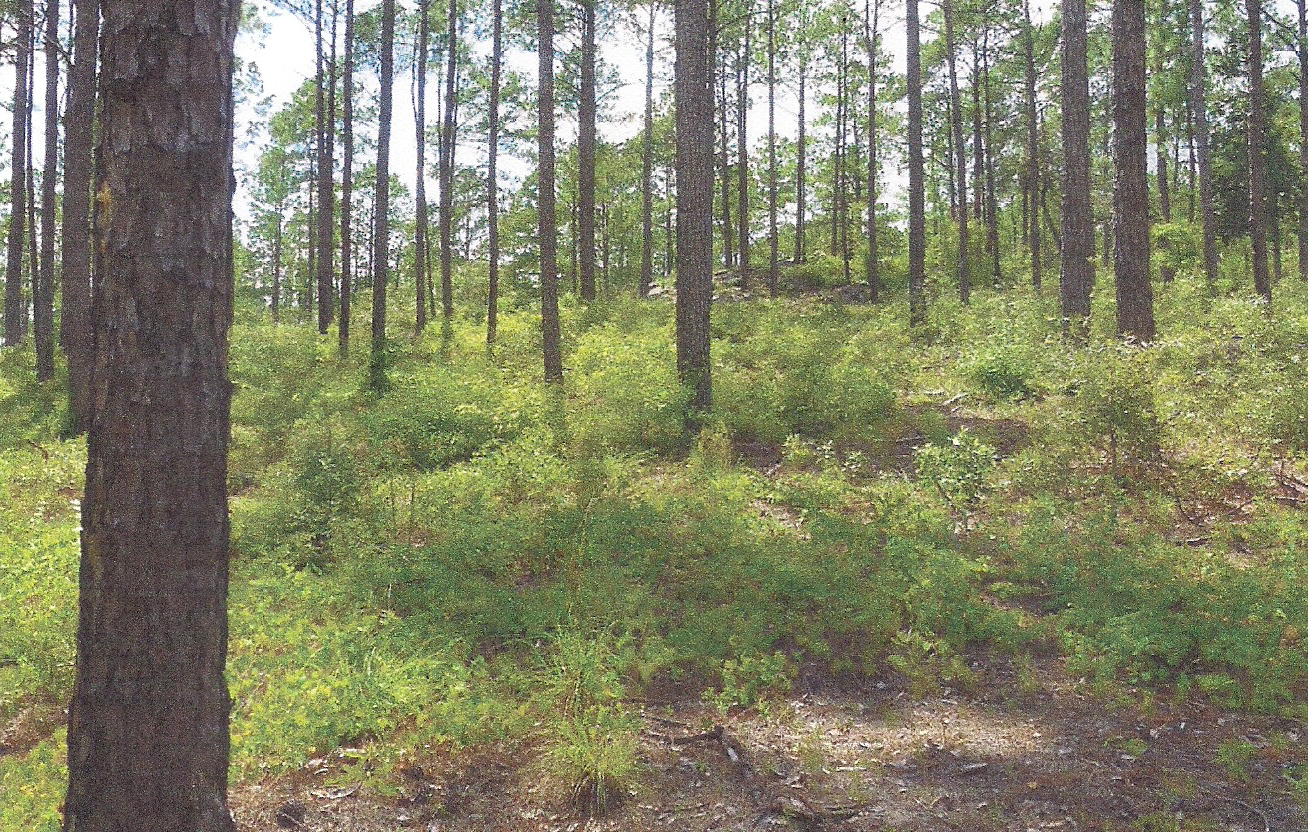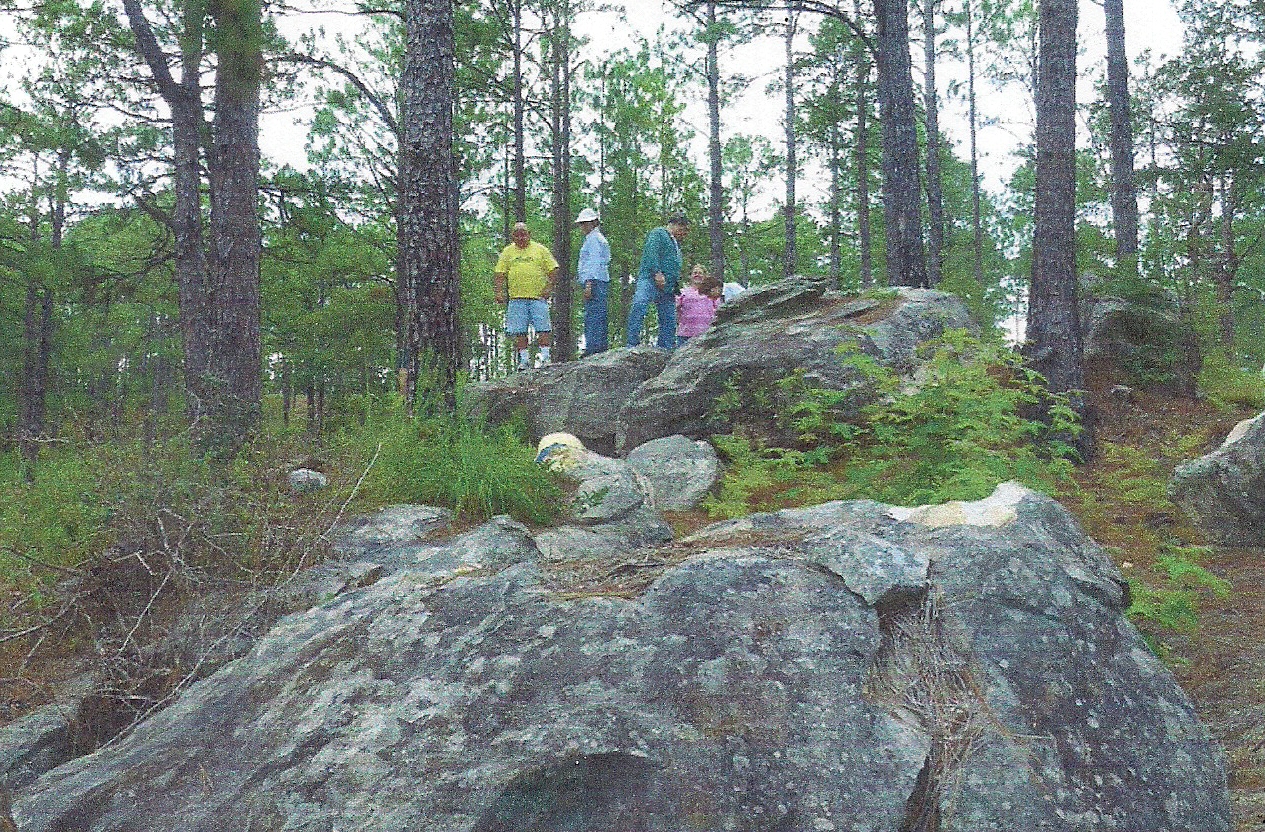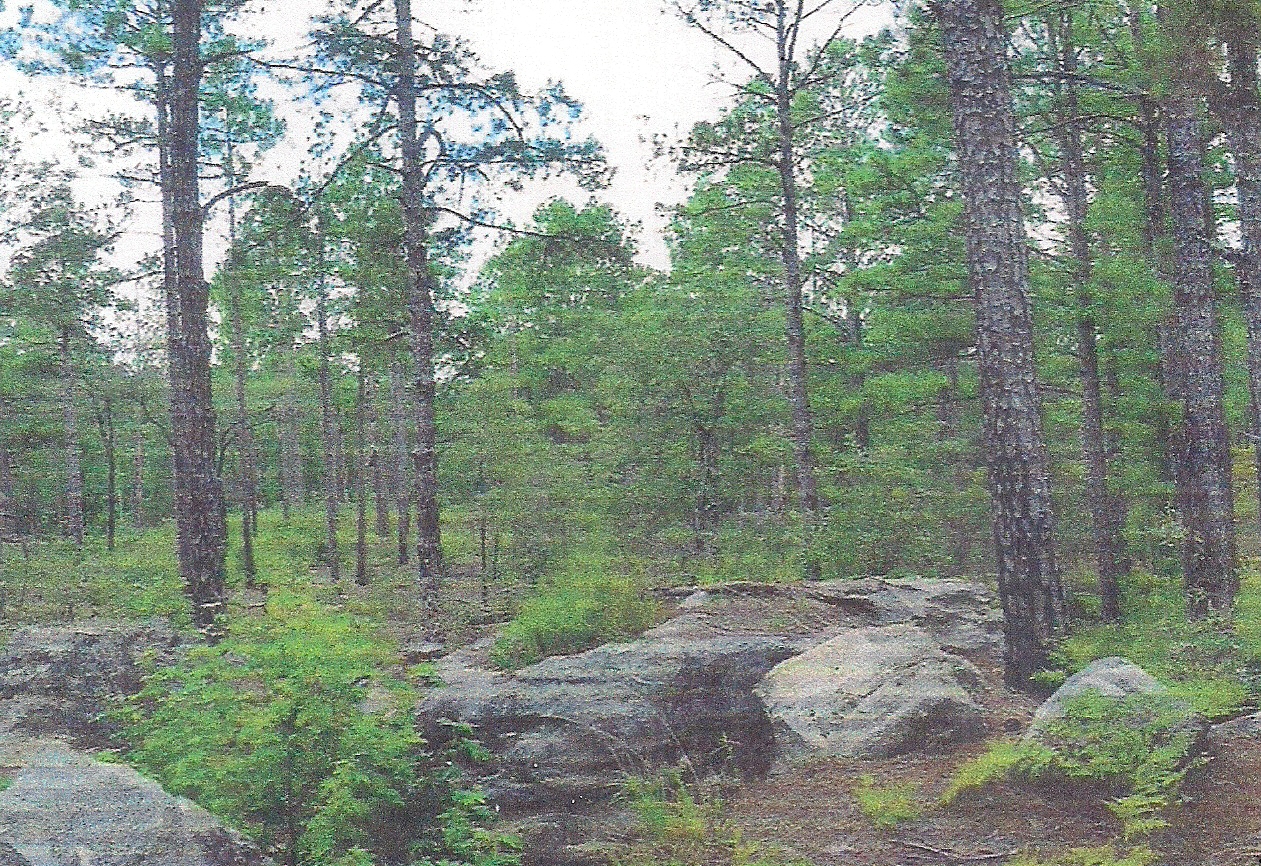JOHN MURRELL'S HIDEOUTS
BY RICKEY ROBERTSON
In Western Louisiana there are many stories and legends, and some tall tales of the days of the Neutral Strip or as many know it, the Free State. In 1802 Spain ceded Louisiana back to France in the Treaty of Ildefonso and on May 2, 1803 the purchase treaty for the Louisiana Purchase was signed and the actual sale date was declared to be April 30, 1803. Louisiana was now a permanent possession of the United States. But Spain did not approve and it decided to re-claim the lands it had once owned and occupied. Spanish troops under Simón de Herrera in 1806 established encampments at Nacogdoches and Spanish patrols began crossing the Sabine River. Could a border war take place? Yes it could. But what happened to prevent it?
With war imminent the United States and Spain came up with a plan. A Neutral Strip agreed upon by both countries was drawn out. Neither country would own it until the actual border could be established. The Neutral Strip was a large area, with the eastern boundary being on the eastern side Rio Hondo Bayou down to Kisatchie Bayou, Devil's Swamp, Calcasieu River, and on to the Gulf of Mexico. The western boundary was the Sabine River. By agreement the area was to be un-policed by both countries. And this area would be as such until 1819 with the signing of the Adams-Onís Treaty. There was no law and order in the area from 1806 until 1819 so it was a safe haven for outlaws. One such famous outlaw was John Murrell. John Murrell had a large band of outlaws with him and had two large hideouts here in western Louisiana.
John A. Murrell was supposed to have been born in Tennessee around 1800. His father was a Methodist minister and he learned the Gospel well. But he also learned to steal and rob well also. Murrell began preaching in and around the Neutral Strip in 1825. While he was preaching, he was also establishing and organizing a large band of outlaws. As he traveled to preach, he established hideouts and headquarters in various locations. He had camps at Midway Station near Fort Jesup and near Los Adaes, but his most elaborate headquarters was in a cave hideout near Kisatchie. He also had a secondary set of caves in what is now western Sabine Parish near the little community of Clearwater in Ward 2. Murrell formed his outlaw band into seven clans and he supposedly had eight different banks where his stolen treasures could be hidden. Members of his outlaw clan were identified to each other in several ways. Each had a black locust tree bordered by two Spanish dagger plants in their front yards. Another way to identify each other was a golden medallion they wore around their necks.
John Murrell went throughout the Neutral Strip peaching and scouting out what types of livestock or valuables the settlers might have. While he was preaching, he would send his men out to rob the homes and farms of the settlers. While waiting to begin his open air church services Murrell looked at the horses and mules the settlers either rode or drove as wagon teams to the service. And after the services, these settlers would be robbed and the fine livestock he had observed would be stolen. During this time in American history, there was no cash money, just gold or silver. Stolen gold and silver from the settlers and from the many settlers traveling through the area were hidden in Murrell's hidden banks. Murrell became known as the "Reverend Devil" due to his activities. Besides his robbing and stealing, he dealt in slaves. One thing he tried to accomplish was an uprising by the slaves against their masters. He never succeeded in doing so.
On present day Kisatchie National Forest at Kisatchie, La. John Murrell had his largest hideout. Known as Murrell's Cave, it was a complex cave network in the rock hills and canyons of Kisatchie near Sheard Branch. These caves had rooms that were of various sizes and shapes. There were different rooms for the men to live in, rooms to store the stolen treasures, and rooms to keep the horses and mules. To find the route to these caves, there were many "waybills" to follow. On trees were specific carvings and on rocks were carvings of various types given cryptic directions. Inside the large cave complex, it was noted that along the walls of the caves were names and codes to help the men get safely in and out of the caves. This was also the same type of caves and directions that were known to be around the caves near the Clearwater Community just over in nearby Sabine Parish.
In around 1942 the US Forest Service decided to dynamite the caves near Kisatchie to keep people from getting lost, injured, or even killed as they hunted for "Murrell's Treasure." My Pappaw Craft was working for the Forest Service and he told me some stories of the Kisatchie Caves. He had lived at Kisatchie many years and had been by the caves many times. He told me of one large room in the caves where there was still a pile of trace chains and leather harness used by Murrells men to pull wagons and carts loaded with stolen treasure. He said this was still there when the caves were blown up. Today there is very little left to even identify this area as where Murrell and his men once hid out.
John Murrell also had a hideout near Clearwater. Many years ago my wife and I went and investigated these caves. Treasure hunters had dug down into the caverns and had destroyed much of this site by using a water well drilling bit to open up the top of the rooms. It was interesting to note that a spring ran from these caves, and a special entrance where a man could ride a horse into the caves undetected was still there. Water, shelter, and protection were provided by these caves. Was this a hideout from authorities or was it one of the locations where treasure was hidden? Was anything ever found at this site or at Kisatchie?
John Murrell remains a mystery to this day. There are many theories of many types concerning John Murrell and of what became of him. One theory was that Murrell was shot and killed by his own gang near Hunts Hill, another that he carried much of his treasure with him to London, England where he died and was buried, another theory was that he secretly left Louisiana and may have went back to Mississippi or Arkansas where he lived out his life, and the last theory was that some of his gang mutinied and turned on him and hanged him near Kisatchie Creek. John Murrell was so careful in the locations of his camps, so careful in gaining the confidence of his men, and so careful in his whole large scale robbery operation that he left few traces of his identity or of what happened to him.
Over the many years with logging and timber harvesting throughout this area, most if not all of the waybills carved into the trees or left in rocks have disappeared. Will anyone ever find any of the treasure John Murrell amassed? 2019 is the Bicentennial Celebration of Louisiana's No Man's Land and John Murrell and his treasure continues to be the greatest legend of this area and of this time in history.
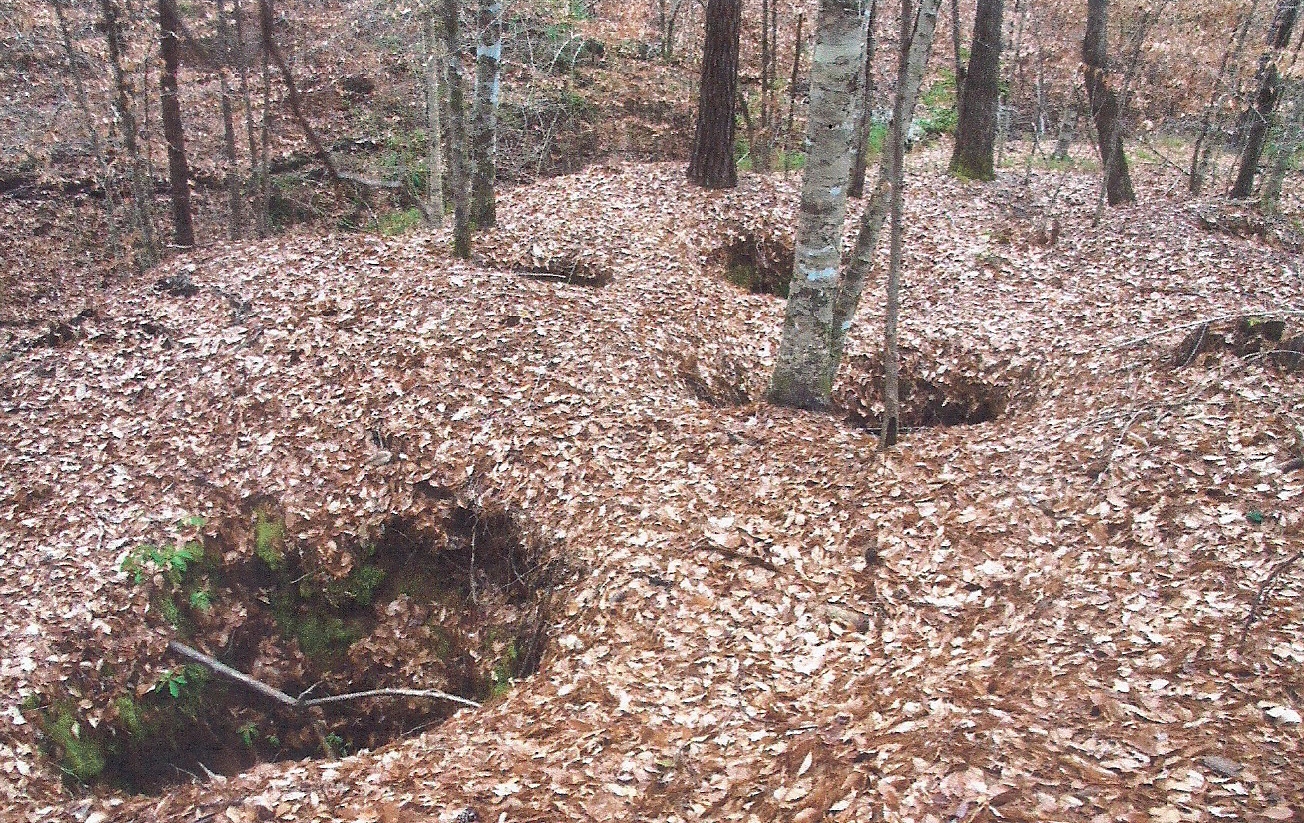
Murrell's Caves in the Clearwater Community of Sabine Parish were dug into a slight hill. Years ago treasure hunters brought in well drilling equipment and drilled down through the roof of several roofs in this hideout. This land is now posted and not available to the public. (Ross Williams Collection)
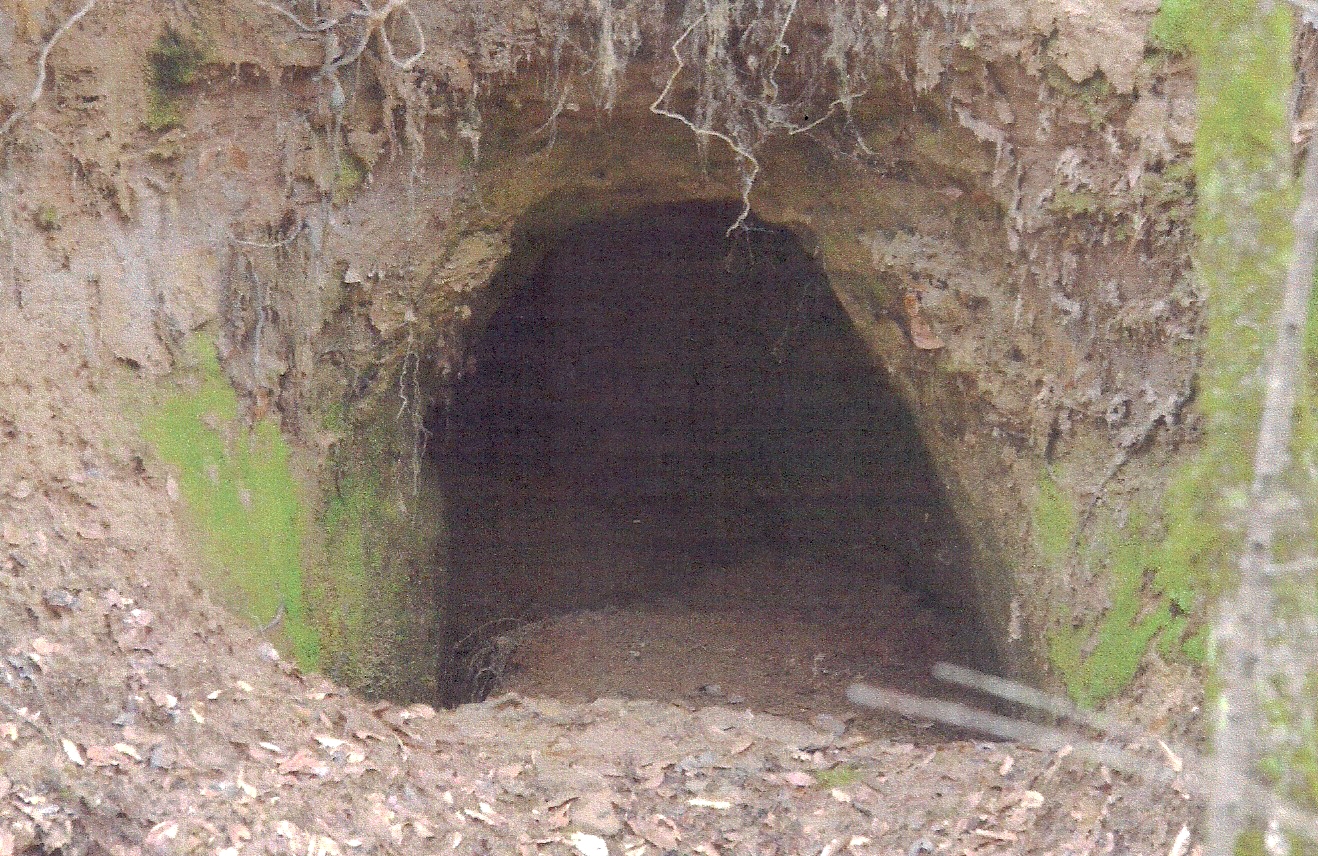
One of several entrances of Murrell's Caves in the Clearwater Community of Sabine Parish. This area is now posted. (Ross Williams Collection)
.jpg)
